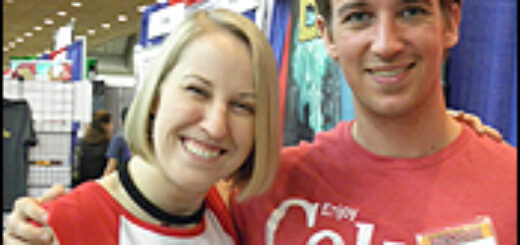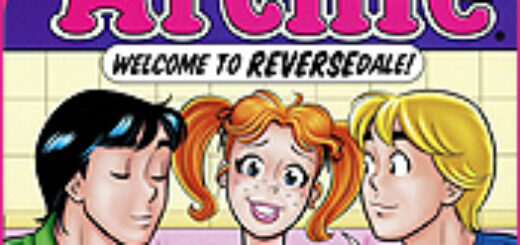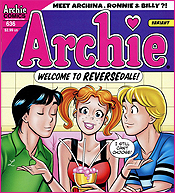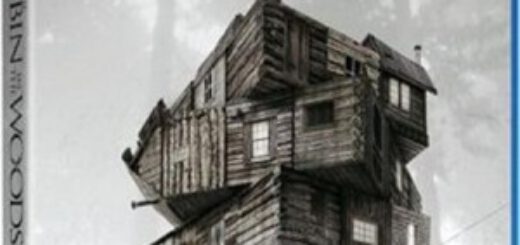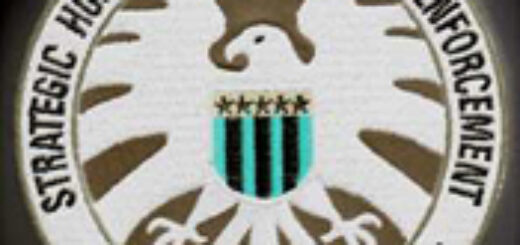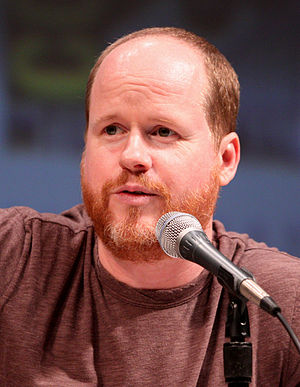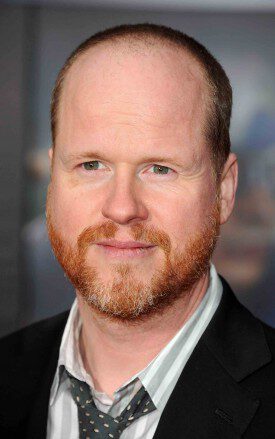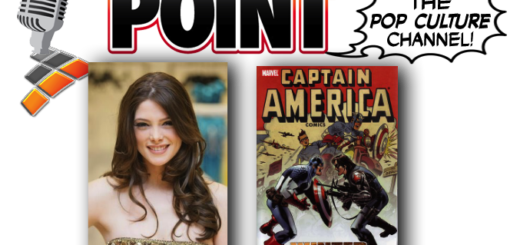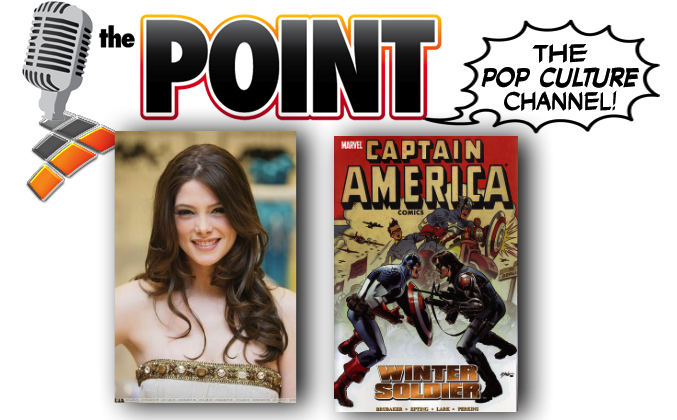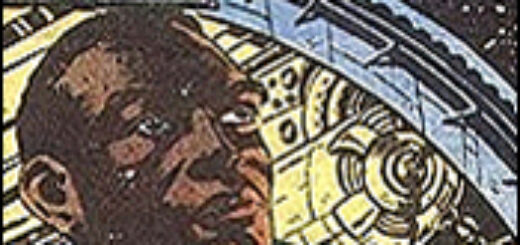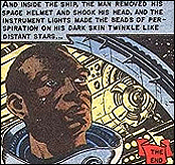Emily S. Whitten Talks With Reilly Brown
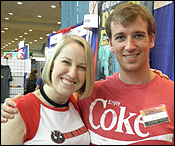 I’ve been a fan of Reilly Brown’s artwork since I first came across it in Marvel’s Cable & Deadpool, and have been following it off and on ever since. There are a lot of artists I like out there, but Reilly is consistently a favorite of mine – his characters’ expressions and the way his drawings capture the energy and emotion of whatever’s happening on the page really appeal to me. I also consider him among the pioneers of the digital comics medium. One of his current projects, Power Play, is a digital comic that was the first effective use of the medium that I had ever seen. To pull from my thoughts when I reviewed the Power Play preview in 2011:
I’ve been a fan of Reilly Brown’s artwork since I first came across it in Marvel’s Cable & Deadpool, and have been following it off and on ever since. There are a lot of artists I like out there, but Reilly is consistently a favorite of mine – his characters’ expressions and the way his drawings capture the energy and emotion of whatever’s happening on the page really appeal to me. I also consider him among the pioneers of the digital comics medium. One of his current projects, Power Play, is a digital comic that was the first effective use of the medium that I had ever seen. To pull from my thoughts when I reviewed the Power Play preview in 2011:
“This is the kind of thing I geek out about, because it excites me to see the potential of the medium being explored to enhance the reading experience. In places it reminds me a bit of the Watchmen stop-animation type video comics they did around the time of the movie, only I never had the patience to watch all of those, since I’d read the book a million times already and they moved too slowly from one frame to the next. But having the ability to read at one’s own pace, and still get the animation-like effects now and again, is fantastic. Being able to see one or two panels at a time, zoomed in or close up, is great. I love the panning from one part of a panel to another, and the fading from full color to monochrome for effect. Having the direction of the screen shifts follow the action is cool; or having the shifts follow the narrative and captions. Also I like how Reilly has the characters in similar poses in a couple of frames, but shifting from one frame to the next gives you the action of a head turn or tilt like in animation.
This is truly the future of how digital comics should be read. I definitely wish I had an iPad so I could experience it in a bigger window, but with only a smartphone, this is hands-down the best way to see digital comics on a hand-held device. For comparison, I downloaded DC Comics New 52 #1 preview and tried reading it on my Droid 2. Now, I know on a computer the usual format is fine; but on a smartphone? It’s fairly unreadable. All the zooming in and panning around necessary just to see one page is a total pain, and not something I have the patience (or eyesight) for. The Power Play layout is infinitely better.”
Given Reilly’s dynamic art and his excellent use of the still-fairly-new digital comics medium, I always consider him one to watch. I’ve also been telling him since something like 2009 that I was going to sit down and interview him one of these days. Finally, at this year’s Baltimore Comic-Con, we made it happen. So here we go!
Emily: So, Reilly, what’s your favorite project that you’ve ever done?
Reilly: My favorite project that I’ve ever worked on is Power Play. I just love doing any creator-owned stuff, especially when I get to sit down and make my own character designs. And not having to feel like the shadows of all of the other decades of awesome artists that have worked on a project before me are looming over me is really freeing. It’s also fun to play around with the digital media and things like that.
Emily: Tell me, what was the genesis of Power Play?
Reilly: It started with me and Kurt Christenson, the writer; since we were both in the same studio at the time, and we’ve been friends for years, one day I said, “You know what, why don’t we do a project together?” and he was like, “Yeah, man, I’d be into it.”
When it started out, we just wanted to do something small, just a quick little simple thing; but as we were spitballing ideas, it turned into this idea that we realized could be really cool if we tried to turn it into something big. The basic idea is that I really wanted to do a story that is based in New York and really uses New York, the real city, as a backdrop. Because so many comics take place in the city but “New York” is just generic buildings in the background or whatever. When I’m walking around the streets, I just see so many cool things – like architectural things, or construction things, or just random things on the street, that are totally normal, but I don’t always think about them when I’m just sitting at my drawing table. And so many of the comics writers don’t even live in New York, so – you know, how do you really make use of a place if you’re not there? I wanted to incorporate New York into a comic.
Emily: How long have you been in New York?
Reilly: I grew up in New Jersey, so I’m right across the river, and I went to school in Virginia but then I moved back after I graduated. So around January 2005 I moved back to New Jersey, with a studio in New York; and I just really wanted to do a story where the writer and I walk around town and plot things out as we go, and just, say, point to a thing, and say, “Okay, the character could jump from that building to that lamppost; and then take a photo reference while we’re there – I actually have photos of most of the backgrounds.
Emily: I didn’t know you actually walk around to plot the stories. That’s pretty cool. So tell me, what’s your favorite hangout or place to go in NYC?
Reilly: There are so many good places to hang out, and it changes all the time. Crocodile Lounge is always a stand-by for me, to go play some skee-ball; and you get a free pizza with every beer. Actually, that’s the bar they go to in the first issue of Power Play; where Mac turns into beer. And…I don’t know, there are too many awesome places to choose from — and half the time, the place is not going to be there in six months.
Emily: That’s true. So who’s you’re favorite character from Power Play, and how does he or she relate to the city?
Reilly: That’s a hard one. I love Gowanus Pete, and the Ice Queen, and Mac…all of the characters are so much fun to draw, and I just feel so close to them.
Emily: Who was the first one you came up with?
Reilly: It was probably either Mac or Gowanus Pete… or the Ice Queen. The studio’s right on the Gowanus Canal, and I remember Kurt and I were having a conversation trying to come up with different characters and their powers as we were leaving the studio and walking to get some lunch. I wanted all of the characters to have kind of goofy origins based on things or places in the city, and just take it to a ridiculous degree; so we were around the Gowanus Canal, which is the nastiest body of water in the country, I mean, it’s horrible. It’s like, multicolored; it’s really just a run-off ditch for a bunch of different waste dumps and things, seriously – look it up. Every now and then you’ll see them testing it to see the different acidity levels and different bacterias and diseases and things people find in there, like they’ll find a dead shark in there, or something like that, or a tiger skull; weird things. So the joke I’ve always had was that if anyone fell in there, they would be horribly mutated – so Kurt and I were walking around talking about different characters and different ideas and powers or personalities, and as we were crossing the Gowanus, there was a really big poster or mural or painting or whatever of the silhouette of an octopus, and Kurt looked at it and said, “Well that’s a character,” and I was like, “Yeah, that’s Gowanus Pete right there.”
Emily: That’s great. You’ve done a really cool digital thing with Power Play – tell me about your digital process and how that all happened; and what your thoughts are on digital comics.
Reilly: The thing that really drove me to do a digital comic was pretty much that no one else was doing it. I saw an area that seemed ripe for comics and for comic artists to play around with, and nobody else seemed to be jumping on it. There are a couple of little webcomics here and there that do stuff; but none that really stood out or that did it for a long-term thing.
Emily: I think we should be making a distinction here; because Marvel and DC and all are doing digital comics, in the sense of putting their stationary paper comics online to be viewed with digital readers; but what I’m thinking of is the way that you’ve manipulated the panels and images with Power Play. So that’s what we’re talking about here.
Reilly: Right; well ComiXology came out, and they were translating all of these Marvel and DC comics, so the typical, mainstream, superhero comics were finding this new digital home through their application. And I was looking at this, thinking, “This is a really cool thing; somebody is going to see this and start making comics designed specifically for ComiXology, or this type of digital format, and they’re going to do it in a way that uses the new digital storytelling techniques.
The thing is, ComiXology did a great job of translating the comic to the iPad, and there are other companies that have tried doing that, but they’ve seemed to trip over the fact that the comics page and the iPad screen, or even the computer screen, aren’t the same shape. Everybody else was stumbling over this, and you had to scroll, or everything was shrunk too small, or you had to zoom in yourself, or there’d be all sorts of problems with it; and ComiXology had found a pretty simple way around that, and it worked great, and it looked great. Yeah, there were a few hoops they had to jump through, but the way they solved those problems; like their guided view thing, you know, where they would actually zoom in on a part of an image that needed to be zoomed in on; and then they would zoom out for the rest of it; or it would pan from one thing to another, and fade from one thing to another, was great. And I thought, “Man, look at all of this stuff they’re pretty much doing by accident at this point; somebody’s going to come around and do this on purpose and it’s going to make an awesome comic.” But nobody was doing it, so then I thought, “Well maybe I could do it. Maybe I’ll be the guy to do that!”
So that’s why we started working on Power Play. I was talking about how we came up with the idea for Power Play; and one of the things we wanted to do was to take advantage of the new mediums. You know, one of the big problems in the entire economy right now is that young people don’t leave their houses or spend money. They’re just on Facebook, downloading things for free, and sharing with their friends, and it’s at the point where if something is not on Facebook, nobody’s going to see it, or at least not as many people as should see it. So we said, “Whatever we do, we want to get it in front of as many people as possible, so let’s come up with a way of doing a really great thing that we can link through Facebook, and everyone can share it; and that takes advantage of that. “ And ComiXology was developed so perfectly for that. So we jumped on that.
Emily: I still point to your comic to show people how this can work. I know there may be a few now, but it’s still not as big as I would expect.
Reilly: You’re right; I’m surprised more people haven’t jumped on it. There are a few others that were first adopters like me, like Alex de Campi and Christine Larsen (Valentine). They actually beat me to the punch; we were already working on Power Play when I saw that come out, and I was like, “Aw, crap, we’re not the first anymore! We’ve really gotta get this thing going!” There’s also David Gallaher and Steve Ellis’s Box 13, which ComiXology actually hired them to make; so it’s really made for their app. And reading that, you really see how their [Steve & Dave’s] thought process is developing on how to use it. How they are learning. At first, it was just as simple as, let’s just make the panels the size or shape of a screen. But then they started seeing more potential. I was in the same building – Steve Ellis’s art studio was just down the hall from mine – so I was working on Power Play while they were working on that, so we’d bounce ideas off of each other. So it was cool to see how some of that stuff ended up playing in their comic.
Most recently, Marvel had their Infinite Comics, which I was happy to be a part of. They have the big AvX [Avengers vs. X-Men] story, and I’d been talking about what I’ve been doing with Power Play to Marvel for awhile, like, “Let me do one of these for you!” I talked to all the editors… Nick Lowe was the one who was really spearheading it over there; or at least when I was talking to them Nick Lowe and Jordan White were the editors that I worked with on that. They’re awesome for seeing that potential and taking a risk, because, you know, Marvel doesn’t often do stuff like that, where they don’t know how it will turn out; and it’s pretty impressive to see a big company like that try to take a risk on something that’s so new. But at the same time I was doing this, Mark Waid was starting his Thrillbent thing, so he was talking all about it. So he wrote the three AvX Infinite installments, and I drew the third one; which was cool. And that was all ComiXology stuff, and it’s all just like how Power Play was done.
Emily: That’s fantastic. I’ll have to look that up, because I haven’t seen it yet. So now, what does the future hold for you?
Reilly: Well I’m not exclusive with Marvel, but I’m currently working on some Scarlet Spider stuff, and we’ll see what happens from there. I’ve still got Power Play going on, and I’ve got some other side projects… I have so many things going on right now!
Emily: It sounds like it! Well Reilly, thanks so much for talking with us , and I look forward to seeing what you come up with next!
…And until then, ComicMix readers, remember to tune in next Tuesday for my interview with Dean Haspiel, and Servo Lectio!
TUESDAY AFTERNOON: Why Does Michael Davis Read Comics?
WEDNESDAY: Mike Gold Attacks Mars Attacks!

